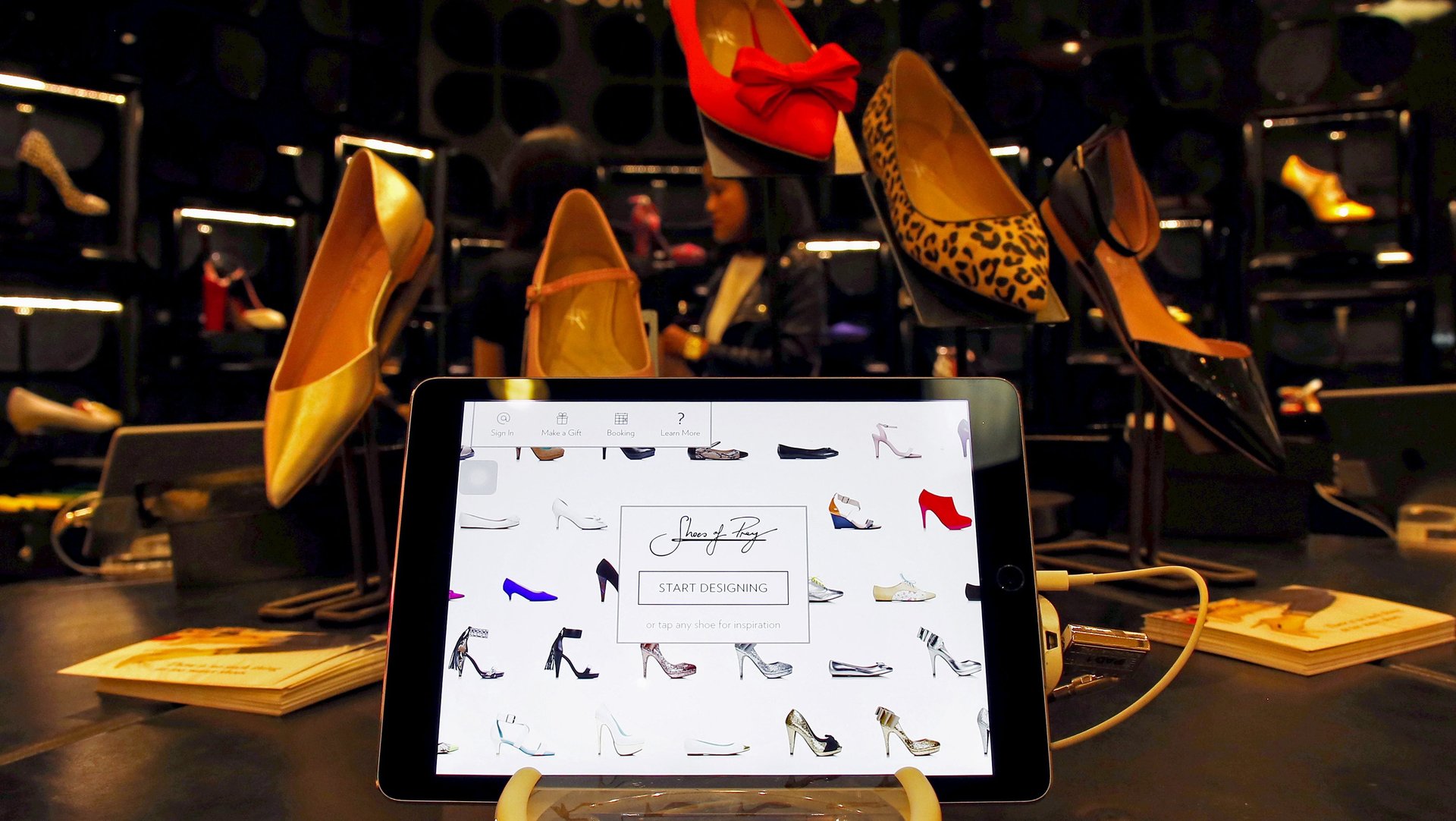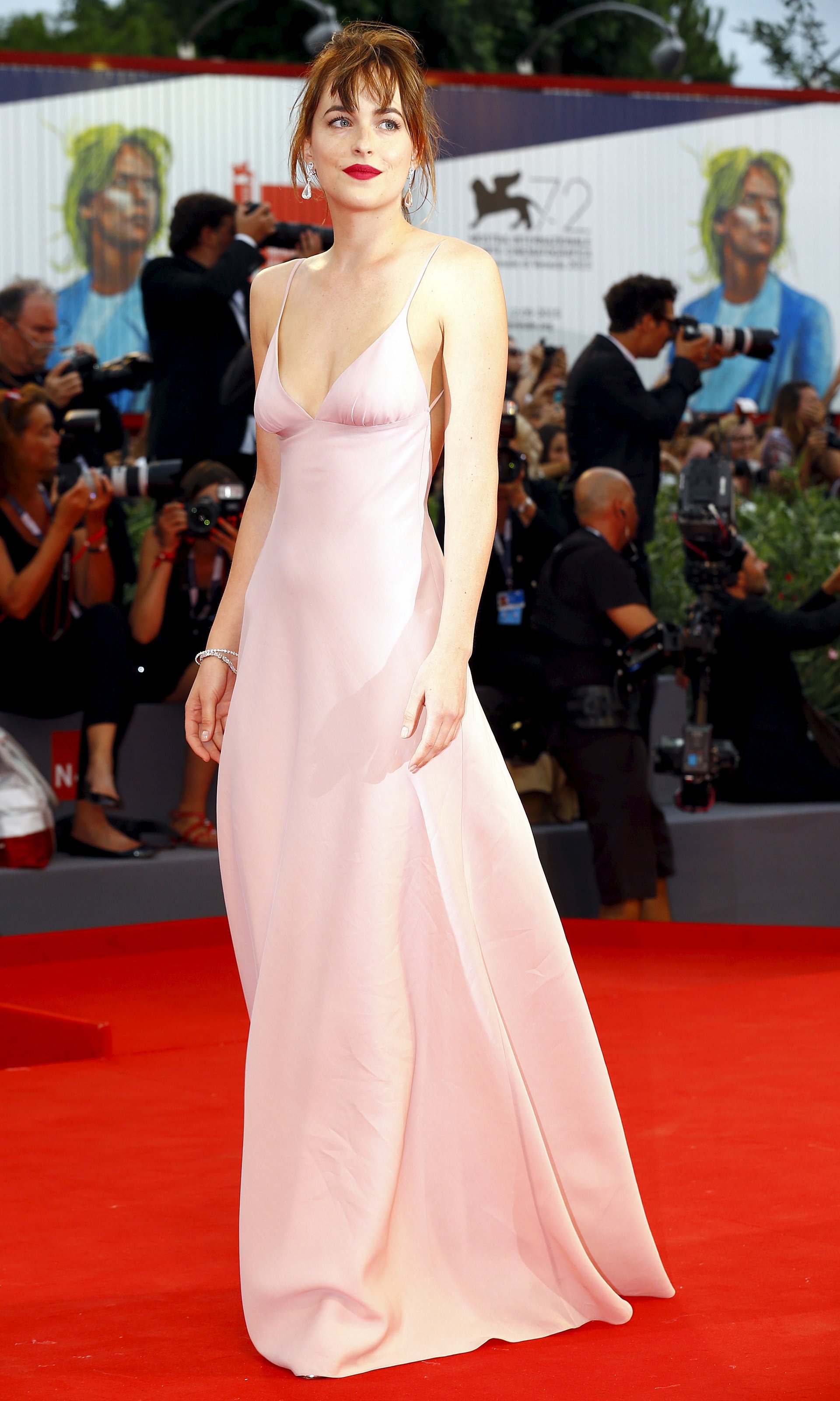You can now get styled by a fashion-savvy algorithm
A floor-length, blush-pink Prada slip coupled with Bally heels and diamond earrings by Chopard worn by Dakota Johnson on the red carpet at the Venice Film Festival had Vogue talking about ‘90s minimalism coming back again and catapulted Kate Young, Johnson’s personal fashion advisor, to the very top of The Hollywood Reporter’s list of 25 most powerful stylists in the industry.


A floor-length, blush-pink Prada slip coupled with Bally heels and diamond earrings by Chopard worn by Dakota Johnson on the red carpet at the Venice Film Festival had Vogue talking about ‘90s minimalism coming back again and catapulted Kate Young, Johnson’s personal fashion advisor, to the very top of The Hollywood Reporter’s list of 25 most powerful stylists in the industry.
With names like Selena Gomez, Sienna Miller, and Natalie Portman among her clients, Young probably isn’t too worried about being out of work anytime soon. Of course, Hollywood is fickle and fashions change rapidly. And on top of that, Young and other stylists may be competing with another type of latest and greatest: a fashion machine.
SK Planet’s Machine Intelligence Lab in South Korea has built a search engine for fashion items powered by artificial neural networks. It understands the concept of style, it understands how to match clothes, and so far, it has at least one thing in common with many wannabe stylists making their first humble steps in the business: it’s a copycat.
All it needs are a few photos. Luckily, the fashion world is full of those; Johnson had dozens of cameras aimed at her while she was walking down the red carpet in Venice. Thousands of shots were taken: Johnson from behind, Johnson exposing her shoe while walking up the stairs, Johnson smiling at the camera.
To unleash the fashion AI on Young’s masterpiece just feed one or few of those images into the algorithm and type in what you’d like: “I want shoes like these,” “I want a dress like this,” or more generally just “I want to be dressed like that.” The system will analyze the picture for fashion-related items, then dig through a catalogue of pre-categorized garments available for sale and get back to you with a selection of products matching this exact style.
You’re not going to be dressed exactly like Dakota Johnson in Venice—after all, most of us don’t even want to know the price tag on that Prada or those Ballys. But you’ll get pretty close.

To build an AI that understands fashion you need to understand it yourself. And, as even the SK Planet team admits, computer scientists aren’t exactly the most style-minded group.
There have been a few university research projects aimed at harnessing machine vision to recognize garments in photos. In each case, researchers needed to define a set of attributes that might help categorize a fashion item like length or collar style. They’d just use common sense—say, long vs. short skirt.
Those were all projects just meant to show proof-of-concept, though. To make a viable commercial product, the SK Planet team needed to go much deeper. So, the researchers swallowed their pride and went to real-life fashion designers for advice. “Those people came up with over 90 [attributes]. We didn’t know most of those things even existed, let alone that they were important,” says Sang-Il Na, the project team leader.
It took over a year to get every detail right up to fashion industry expert snuff. Neural networks were trained to recognize thousands of different styles on nearly a million photos taken from 11Street, the largest online store in South Korea, and where SK Planet’s fashion AI is supposed to make its market debut by the end of 2016.
Machine vision works best when you can feed it good, crisp, high-resolution pictures. Neural networks, however, are painfully susceptible to drops in input quality. Train it to recognize a jacket on professionally-taken photos of models, and then show it another pro image and you’ll get something approaching 90% accuracy; feed it your mirror selfie with the same jacket on in low light, and you’ll be down to between 45-65%, depending on the algorithm. That’s why recognizing features in blurry or dark images is a task commonly used to tell humans from robots: it’s a piece of cake for human brain but hell of a challenge for a machine.
But what if instead of trying to rip off Dakota Johnson’s style, you wanted to plagiarize the outfit your friend wore to that club the other night, but all you have is one poorly lit, out of focus camera phone image of her?
Sang-Il Na says their system is designed to handle those sorts of scenarios. “Most pictures you can find on 11Street are outdoor shots that look fairly natural, unlike the usual stuff in fashion magazines,” says Sang-Il Na. The key difference is that fashion magazines usually use studio shots with artificial (predominantly white) backgrounds, while in outdoor shots you can see streets, parks, and all sorts of other things the neural network has to deal with. To an algorithm, those outdoor shots are much closer to the average smartphone photo.
Being a fashion copycat is well and good. But to pose a challenge to a master human stylist like Kate Young, the AI has to learn how to create.
At the very heart of Sang-Il Na’s fashion AI system is what’s called “Long Short-Term Memory,” a neural network architecture introduced back in 1997. One of the co-inventors of long short-term memory, Jürgen Schmidhuber, is obsessed with machine creativity. Besides heading the Swiss Dalle Molle Institute for Artificial Intelligence Research, Schmidhuber is an artist and painter—he’s confident that AI will eventually make art, too. “Of course machines will be creative,” he says. “I’m working on it.”